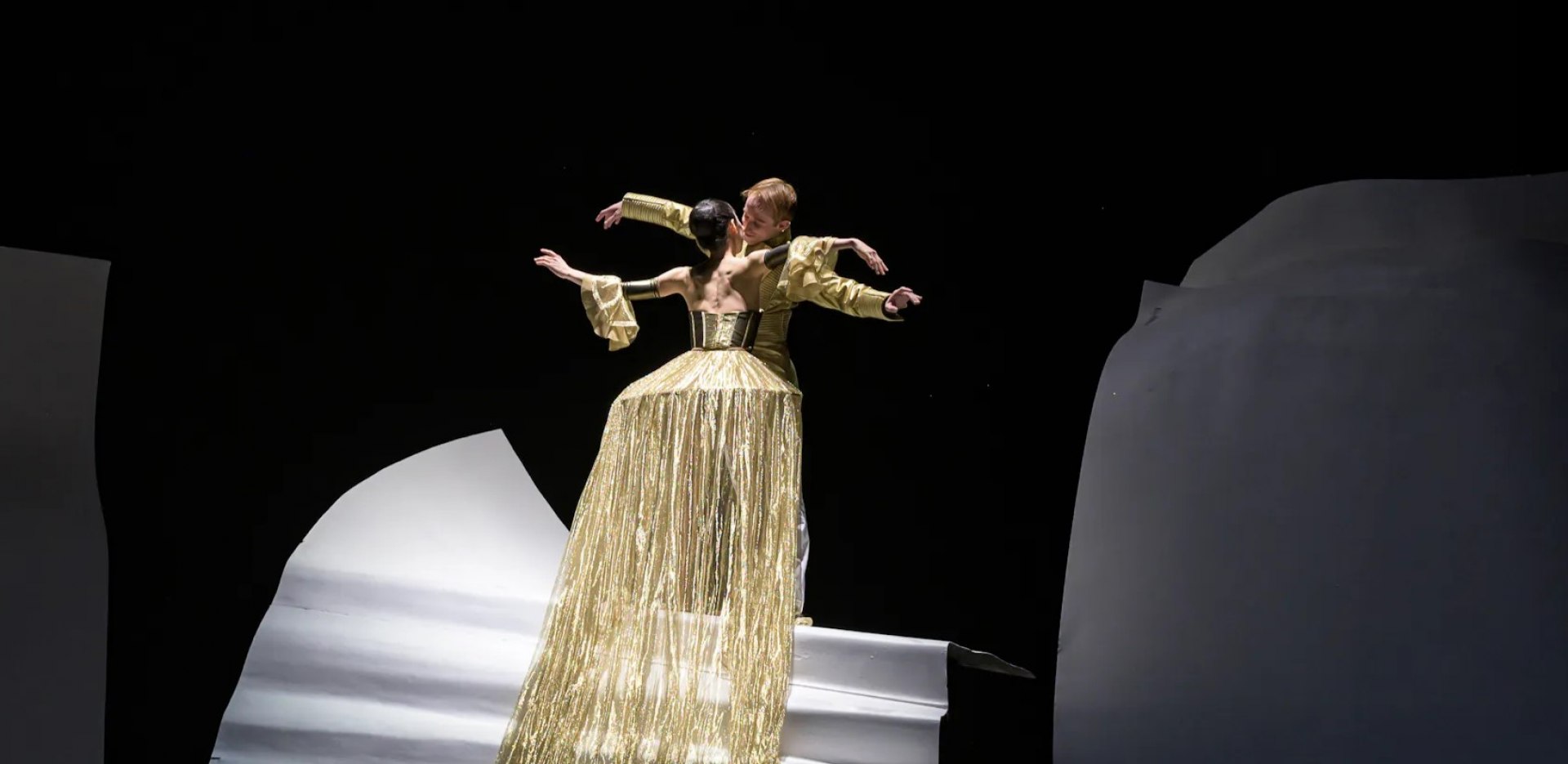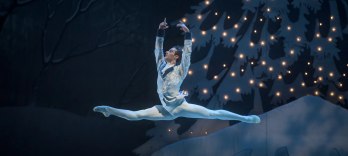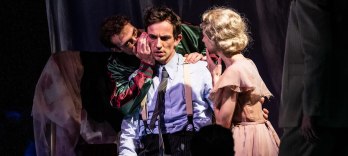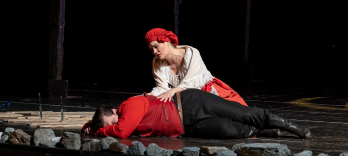Cinderella
March 2025 | ||||||
|---|---|---|---|---|---|---|
Mo | Tu | We | Th | Fr | Sa | Su |
The remake of the popular ballet Cinderella made by the world-famous French choreographer Jean-Christophe Maillot to the music of Sergei Prokofiev reflects another dramaturgical line of the Czech National Ballet – an effort to return titles that have become very popular in the past and whose quality and significance will never lose its artistic value or topical message.
Cinderella is a well-known title, suitable for children, with an extraordinary musical score by Sergei Prokofiev, which alongside with Romeo and Juliet became a popular fixture of the Czech National Ballet's repertoire.
Sergei Prokofiev wrote his score during World War II. He applied leitmotifs reflecting the individual
situations and underlining the lead characters’ specific traits and feelings. Prokofiev’s Cinderella
received its world premiere in 1945, and, along with Romeo and Juliet and The Tale of the Stone Flower,
is among his most frequently staged ballets.
Jean-Christophe Maillot is a prominent leading choreographic figure associated with the equally famous ballet ensemble in Monte Carlo where this production comes from. Maillot has a very distinctive style based on a refined, primarily artistic concept of ballets. The artist presents the virtuoso classical ballet technique in new variants of movement and spatial structures originating as if from "another world". His Cinderella also bears this signature technique. It is a production with an unusual beauty of modern aesthetics and exceptional energy, which permeates all its musical, artistic, directorial and choreographic components.
What is Maillot’s production like? A vital role is played by memories.
“When I created Cendrillon, I was grieving the death of my father. The notion of mourning is found in several
of my ballets and it takes on an important dimension in this piece. How can we continue to live without the
memory of the deceased crushing us? My response to this is that we need to be more attentive to others,
even though grief tends to isolate us from the rest of the world. The friends, family, the human beings
that chance puts in our path. Among them are the good fairies who will be able to uplift us,” says JeanChristophe Maillot.
National Theatre Orchestra
Suitable for audience from 7 years.
Program and cast
Approximate running time: 2 hours, 1 intermission (20 minutes)
Cinderella:
Aya Okumura
Alina Nanu
The Prince:
Matěj Šust
Jakub Rašek
The Fairy:
Romina Contreras
Ayaka Fujii
The Father:
Danilo Lo Monaco
Patrik Holeček
The Stepmother:
Nikola Márová
Evgeniya Victory Gonzalez
The Sisters:
Irina Burduja
Olga Bogoliubskaia
Alexandra Pera
Mariana Gasperin
The Pleasure Superintendents:
Jonáš Dolník
Mathias Deneux
Francesco Scarpato
Giovanni Rotolo
Creative team
Choreography - Jean-Christophe Maillot
Music - Sergei Prokofiev
Sets - Ernest Pignon-Ernest
Costumes - Jérôme Kaplan
Lighting design - Dominique Drillot
Staged by - Bernice Coppieters, George OliveiraBruno Roque
Musical preparation - Jaroslav Kyzlink
Conductor - Jaroslav Kyzlink, Václav Zahradník
Music played by National Theatre Orchestra
Prague National Theatre
The National Theatre today
The historical building of the National Theatre, constructed in 1883, is generally considered the prime stage in the CzechRepublic. It is the flagship of the National Theatre institution, today amounting to five buildings and encompassing four companies. You can see there Opera, Drama and Ballet performances.
Idea of building a stately theatre for the Czech nation
The National Theatre is the embodiment of the will of the Czech nation for a national identity and independence. Collections of money among the broad mass of the people facilitated its construction and hence the ceremonial laying of its foundation stone on 16 May 1868 was tantamount a nationwide political manifestation.
The idea of building a stately edifice to serve as a theatre was first mooted in the autumn of 1844 at meetings of patriots in Prague. It began to materialise through a request for “the privilege of constructing, furnishing, maintaining and managing” an independent Czech theatre, which was submitted to the Provincial Committee of the Czech Assembly by František Palacký on 29 January 1845. The privilege was granted in April 1845. Yet it was not until six years later – in April 1851 – that the Society for the Establishment of a Czech National Theatre in Prague (founded in the meantime) made its first public appeal to start collections. A year later the proceeds of the first collections allowed for the purchase of land belonging to a former salt works with the area of less than 28 acres, which predetermined the magnificent location of the theatre on the bank of the river Vltava facing the panorama of Prague Castle, yet at the same time the cramped area and trapezoidal shape posed challenging problems for the building’s designers.
By car
To the centre (OldTown), approach on Masarykovo nábřeží (Masaryk embankment) in the direction from the Dancing House, at the crossroads in front of the National Theatre turn right to Divadelní street and then right again to Ostrovní street to the National Theatre car park. Parking costs 50 CZK/h.
By tram
By daytime trams Nos. 6, 9, 18 and 22 and night trams Nos. 53, 57, 58, 59 to the stop “Národní divadlo” – in front of the NT historical building; by daytime tram No. 17 to the stop “Národní divadlo”.
By metro
To the station “Můstek”, line B (yellow), and then by foot on Národní street; or to the station “Karlovo náměstí” and then two stops by tram No. 6, 18 or 22 to the stop “Národní divadlo”. To the station “Staroměstská”, line A (green), and then two stops by tram No. 17 to the stop “Národní divadlo”.
Performances: Sa 07 Dec 2024,
Performances: Mo 30 Sep 2024,
Performances: Su 01 Sep 2024,
Performances: Fr 22 Nov 2024,
Performances: We 11 Dec 2024,
Performances: We 11 Sep 2024,

 EN
EN DE
DE IT
IT FR
FR ES
ES RU
RU JP
JP RO
RO
 Seating plan
Seating plan 










